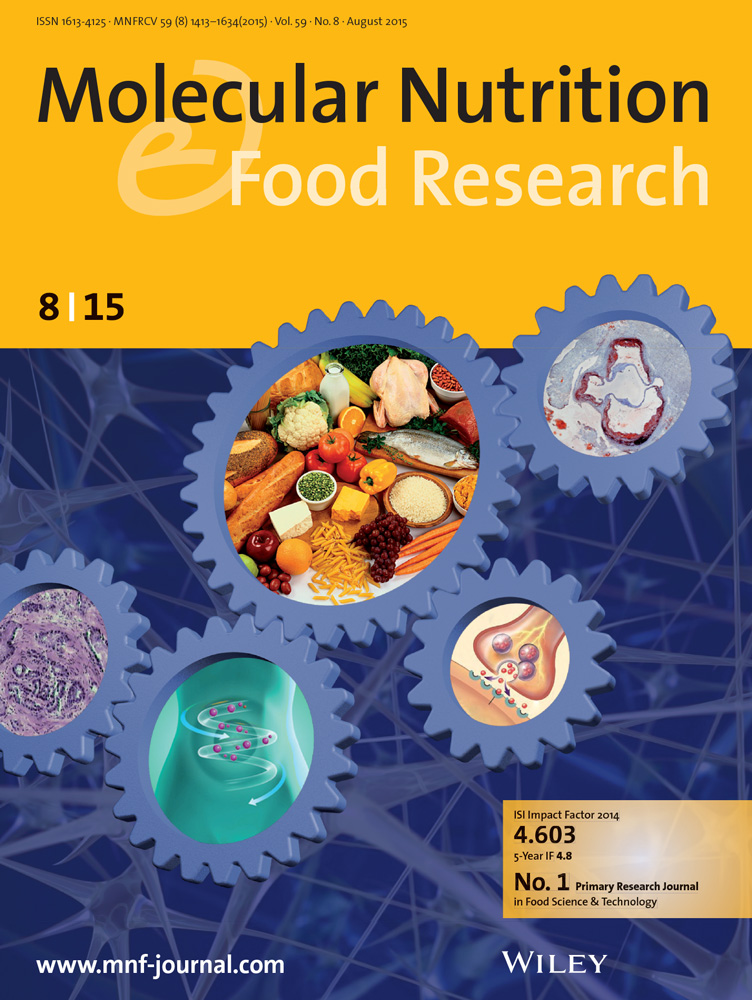The Anti-Pulmonary Fibrosis Code of Plant Anthocyanins-A Multi-Targeted Anti-Fibrotic Bioactive Compound by Inhibiting the NLRP3 Inflammasome.
IF 4.2
2区 农林科学
Q1 FOOD SCIENCE & TECHNOLOGY
引用次数: 0
Abstract
Pulmonary fibrosis (PF) is a fatal disease lacking effective treatments. Although anthocyanins possess pleiotropic biological activities, their potential in PF treatment remains insufficiently evaluated. This study intends to systematically assess the anti-fibrotic efficacy of selected anthocyanins and clarify their mechanisms of action.Data mining of six common anthocyanins identified three with the highest anti-fibrotic potential and their therapeutic targets. Animal studies revealed that these anthocyanins ameliorated bleomycin (BLM)-induced PF. Analysis identified 83 common core targets shared between the anthocyanin components and PF pathogenesis, primarily enriched in stimulus response and positive regulation of biological processes. Treatment with all three anthocyanins significantly reduced PF-associated mortality, inhibited weight loss, decreased lung coefficient, and lowered hydroxyproline (HYP) and malondialdehyde (MDA) levels in lung tissue. Furthermore, they suppressed mRNA expression of inflammatory cytokines IL-1β and TNF-α, promoted expression of the epithelial marker E-cadherin, reduced levels of fibrotic markers α-SMA and Collagen I, and modulated the inflammasome NLRP3-Caspase-1 axis ameliorates PF.Anthocyanins, especially anthocyanin-3-O-galactoside (C3G), improve BLM-induced PF by regulating the NLRP3-Caspase-1 inflammasome axis.植物花青素-一种通过抑制NLRP3炎性体的多靶点抗纤维化生物活性化合物的抗肺纤维化密码。
肺纤维化是一种缺乏有效治疗的致命疾病。虽然花青素具有多效性生物活性,但其在PF治疗中的潜力尚未得到充分评价。本研究旨在系统评价所选花青素的抗纤维化作用,并阐明其作用机制。通过对六种常见花青素的数据挖掘,确定了三种具有最高抗纤维化潜能的花青素及其治疗靶点。动物实验表明,这些花青素改善了博莱霉素(BLM)诱导的PF。分析发现,花青素成分与PF发病机制之间共有83个共同核心靶点,主要富集于刺激反应和积极调节生物过程。使用所有三种花青素治疗可显著降低与pf相关的死亡率,抑制体重减轻,降低肺系数,降低肺组织中羟脯氨酸(HYP)和丙二醛(MDA)水平。此外,它们抑制炎症细胞因子IL-1β和TNF-α的mRNA表达,促进上皮标志物E-cadherin的表达,降低纤维化标志物α-SMA和胶原I的水平,并调节炎症小体NLRP3-Caspase-1轴,改善PF。花青素,特别是花青素-3- o -半乳糖苷(C3G),通过调节NLRP3-Caspase-1炎症小体轴改善blm诱导的PF。
本文章由计算机程序翻译,如有差异,请以英文原文为准。
求助全文
约1分钟内获得全文
求助全文
来源期刊

Molecular Nutrition & Food Research
工程技术-食品科技
CiteScore
8.70
自引率
1.90%
发文量
250
审稿时长
1.7 months
期刊介绍:
Molecular Nutrition & Food Research is a primary research journal devoted to health, safety and all aspects of molecular nutrition such as nutritional biochemistry, nutrigenomics and metabolomics aiming to link the information arising from related disciplines:
Bioactivity: Nutritional and medical effects of food constituents including bioavailability and kinetics.
Immunology: Understanding the interactions of food and the immune system.
Microbiology: Food spoilage, food pathogens, chemical and physical approaches of fermented foods and novel microbial processes.
Chemistry: Isolation and analysis of bioactive food ingredients while considering environmental aspects.
 求助内容:
求助内容: 应助结果提醒方式:
应助结果提醒方式:


